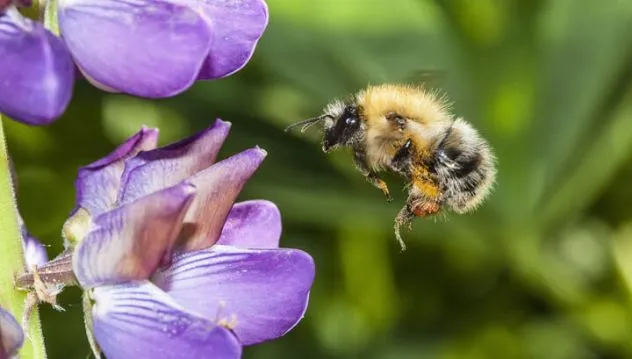Gardening provides a relaxing hobby to appreciate nature while also supplying some quality alone time. Growing an eco-conscious garden can take that hobby one step further for a wide range of benefits to local ecosystems.
Here are a few tips on how you can turn your garden into a beneficial haven for bees, butterflies and other important pollinators that could use your help.
One of the best things any eco-conscious gardener can do is make their outdoor space a bee-friendly habitat. Ninety percent of plant life relies on pollinators to survive and reproduce, and there is no pollinator more common than bees. Unfortunately, bee populations are decreasing rapidly, and could be the canary in the coal mine for ecosystems that rely on their pollinating activities. If we lose the pollinators then we lose the plants, and if we lose the plants then everything else goes too.
Bee population decline can be attributed to many factors, including habitat loss and the use of pesticides. This is why there is a big push amongst environmentalists to encourage people to develop bee-friendly gardens and help our pollinating bee friends. Creating a bee-friendly garden is an easy and fun learning experience for the young and old alike.
Easy tips to create a bee-friendly garden
- Plant a range of species that flower at different times of the year so that bees have options while snacking on your garden year-round.
- Plant flowers that are rich and bright in color to attract bees and create an inviting atmosphere.
- Plant a wide variety of flowers that will be pleasing to different types of bees with varying tongue lengths.
- Build a bee house, which will serve as shelter from the rain. This can be done easily with an empty milk carton. A more complex bee house can be built with other materials if preferred. Go ahead and hang up a sign in front of your bee house that says something along the lines of, “It’s good to bee home.” Others might not find it funny, but you will, and that’s all that really matters.
Monarch butterfly-friendly garden
Creating a garden that is appealing to butterflies will not only help their struggling populations, but you will get the intangible joy of watching some of nature’s most brightly colored creatures enjoying the healthy environment that you help preserve.
Every November millions of butterflies do the same thing as retirees and head south before the cold weather comes in. The butterflies embark on a 2,000 to 5,000-kilometer journey from southern Canada and the northern United States all the way to Mexico, where they hibernate. It is the second longest migration of any insect, only behind dragonflies, which migrate from India to Africa every year.
Butterflies, like bees, are important pollinators and provide a valuable role in creating healthy plant life. They have also been used by ecologists to assess the health of an ecosystem, as wherever there are butterflies you can be sure there will be a wide range of other invertebrates. An abundance of butterflies usually means an abundance of life and diversity in an area. Unfortunately, butterfly populations are in peril, and some point to this as evidence that the stability of Earth’s ecosystems are weakening.
The most threatened of the butterfly species is also the most visible. Monarch butterfly populations have scientists across North America concerned. The number of monarch butterflies migrating to Mexico in the winter has dropped from an estimated 1 billion to below 60 million.
As with bees, there are multiple factors that have played a role in the butterfly population decline. Many are pointing to pesticide use as a major contributor, namely the ones used to kill off milkweed, an important resource for butterflies. For whatever reason, milkweed is the only plant that monarch butterflies will lay their eggs on and it is their primary food source. As pesticides and habitat loss throughout the continent reduce the availability of milkweed, eco-conscious gardeners are being asked to plant it in their gardens.
In addition to planting milkweed, here are some other steps you can take to turn your garden into a healthy place for migrating butterflies to stop, refuel and lay some eggs:
- Avoid using pesticides or insecticides.
- Make sure your plants are well watered, as this will increase the amount of nectar they are able to produce.
- If possible, place your butterfly-friendly plants, flowers and milkweed in a sunny position, as butterflies need to maintain a warm body temperature.
- Caterpillars need host plants to feed on. Good choices for these include clovers and violets, in addition to milkweed.
- Keep a puddle area, or an area that collects rainwater, for butterflies to drink from.
Eco-friendly gardening doesn’t just stop at providing a habitat for nature’s pollinators. Here are a few more easy tips on how you can create an environmentally-friendly garden:
- Instead of using water from a hose (or recycled greywater) to water your plants, try re-using rainwater that you have collected by purchasing a rain barrel or making your own.
- An easy way to get your feet wet in the world of composting is to start by using your food waste and allowing your garden to put those leftover nutrients to good use.
- Growing your own food is a great way to reduce the carbon footprint of a meal to near zero, so long as you avoid using harmful pesticides or insecticides in the process. Plus, food you grow yourself always tastes better.
- Join a communal garden! Perhaps your garden space has gotten too small for your gardening desires, or perhaps you just want to meet others who share your hobby. A communal garden is a great way to produce local food, and will also usually have a communal composting system that makes it easier for all involved.
— Ian Carey



